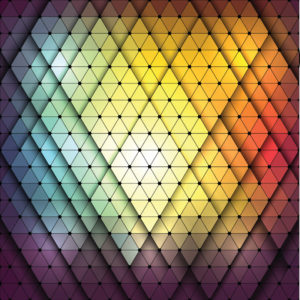
Getting Your Color Right
 Ever wondered about the magic behind the curtain when it comes to color? Here is a peek into the effort and precision it takes to give you the best color day after day, job after job, even when projects are months apart.
Ever wondered about the magic behind the curtain when it comes to color? Here is a peek into the effort and precision it takes to give you the best color day after day, job after job, even when projects are months apart.
The process starts with color space. Your computer monitors operate in the RGB color space. Presses operate in the CMYK color space. The two spaces work very differently, and to get your color right, there is a delicate and complex conversion process that must take place between them.
Adding to the challenge is that RGB and CMYK are device dependent.
This means that the same colors look different on different devices. Consider the television monitors along the wall of an electronics store. All of the screens may be playing the same channel, but the colors look very different. The same thing happens in the RGB and CMYK spaces. The appearance of colors varies based upon the device.
With so much variation in the process, how do you end up with consistent, predictable color from job to job? That is where the magic happens.
Below we’ve listed the steps we follow.
Getting great color is not a magic trick. It requires a lot of craft and science, as well as a heavy dose of dedication. That’s why you don’t want to trust your color to just anyone.
Define independent color space.
First we define color by metrics that are unrelated to any device. Instead, we define how color looks to the eye.
Take the color of a ripe, red apple. On your designer’s computer screen, “apple red” is defined by a set of RGB values. That color will display differently on different monitors, so it is assigned a CIE L*a*b value, which is an objective, device-independent measurement what the designer’s eye actually sees. That CIE L*a*b value corresponds to an ICC color profile, which is an objective measurement of how that monitor “sees” and outputs color.
Translate to “press language.”
Now that we have an ICC profile for the color on the monitor, we need to be able to reproduce that color on press. Every press is unique, so the ICC color profile for the RGB monitor is translated into an ICC profile for the CYMK press.
Workflow steps to make it happen.
Now it is time to manage the physical workflow to get that color onto paper.
This starts with making choices at the RIP to ensure that the settings match the ones from the native applications. It also requires regular calibration of the presses to make sure that the color is not only accurate but repeatable. To calibrate our presses, we measure the tonal steps on the output device, then create a curve to linearize the device based on substrate, press technology and speed, halftone screen, resolution, and other factors.
On digital presses, calibration will also compensate for environmental fluctuations such as temperature and humidity. The combination of a calibrated press and the right ICC profile gives you not just repeatable color but accurate color.
Adapted from EFI’s webinar: “World of Fiery: 3 Key Steps to Get the Right Color the First Try.” You can view a video presentation on this topic at http://tinyurl.com/pfw76bu.







